Now that the rumours and conjecture around HSV’s future have been settled with the reveal of the Colorado SportsCat, we can dissect its decision to enhance the abilities of a double-cab ute. On this side of the Tasman it makes sense given the popularity of high-end double cabs. This thing is sure to fire even if HSV has decided against hotting up the powertrain. What’s that you ask? No added herbs? No big torque number emblazoned on the tailgate? Yeah, nah, the powertrain is unchanged from the Colorado Z71 donor vehicle.
As HSV boss, Tim Jackson, said at the reveal of the new ute, the company was facing the textbook definition of an existential crisis, and it needed to reinvent itself. “We asked ourselves two questions; where will we play and how will we compete? The company’s tradition is adding value to existing products, which we’d done so well for the past 30 years with the Commodore, but we needed to look at which segments were growing, and to what vehicles we could apply our expertise.”
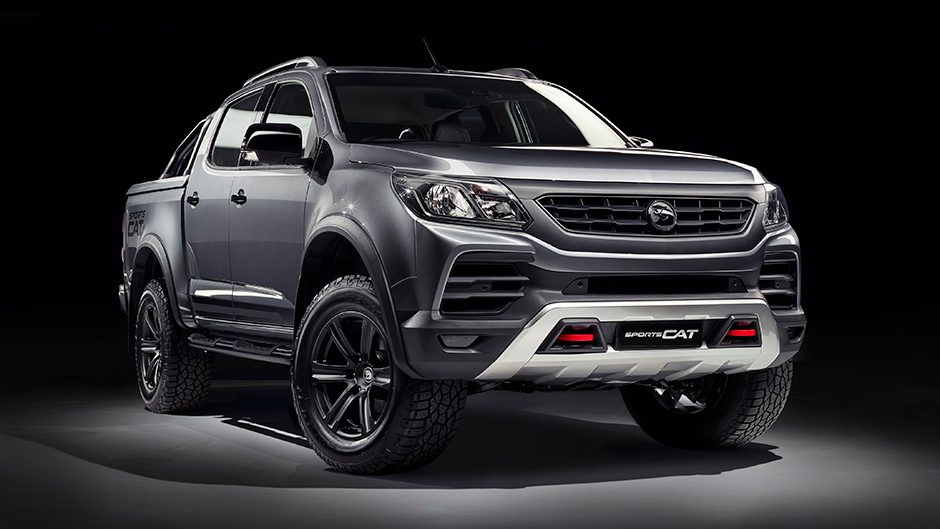
Its first vehicle of the new era is the Colorado SportsCat. “We think it moves things along in the category but it doesn’t have a power up and we’re actually pretty comfortable with that.” He says the goal was to focus on improving the total package in terms of capability. “There’s a compromise around every corner with a ute. You try to make it better on road and it gets worse off road, and we have to deal with payload issues, and so we’ve added some interesting technologies. Not only do we think we have a great benchmark in terms of on road driving but we’ve actually improved the off road capability as well.”
But what about the lack of excess power, an HSV hallmark for so many years? Jackson says there are a few reasons for leaving the engine alone, chiefly the cost, complexity and time to create what he says was going to be a very minor increase. “The impact it was going to have on other elements of the truck didn’t make sense. Given this was a new segment for us, we did some research and what we got back was more about the overall package. Our traditional customer is all about power, power, power, but here it’s the total package that really matters.”
Jackson says HSV’s business is about ‘making exciting product’ at the end of the day and that you can expect a more diversified product portfolio in the future which will continue to revolve around enhancing Holden product but also reengineering Chevrolets for right hand drive.
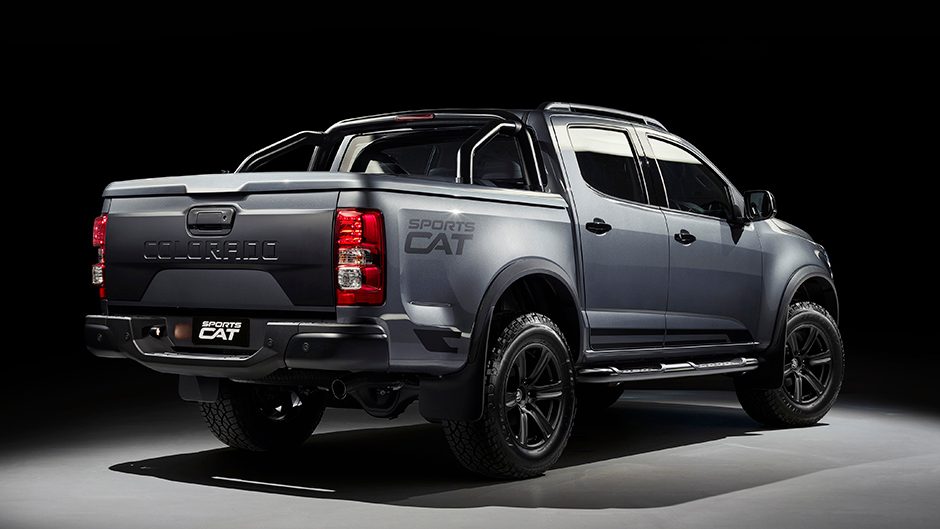
As to the SportsCat, the project started two years ago and the major objective was to engineer a new ute benchmark in terms of on-road performance and to improve on the donor vehicle’s off-road capability, challenging considering they are opposing objectives. Two models will be offered, SportsCat and SportsCat+. Both feature HSV sports suspension with a 10 per cent stiffer front spring to reduce roll and increase the steering response. Multi-tube valve dampers (the same as those used on the ClubSport for the past 10 years) have been added front and rear. A strut brace now sits inside the strut tower on the chassis lending a significant improvement in stiffness says Joel Stoddart, HSV’s chief engineer, and they’ve added a thicker 33mm front roll bar.
The new spring also lifts the front by 25mm, which levels the stance and also improves the approach angle from 28 to 32 degrees. Forged 18-inch wheels are 10 inches wide and come wrapped in Cooper Zeon LTZ Pro 285/60 R18 tyres developed for HSV. These are a Sports All-Terrain tyre and Stoddart says they wanted to achieve strong on-road performance with good off-road capability and that the Cooper tyre hit the mark. As they are a truck tyre, there’s no impact on the GVM or the 3500kg tow rating. The wheels are offset which adds 30mm to the track and with an increase in the rolling radius, the package adds a further 20mm to the ride height, with ground clearance totalling 251mm.
On the SportsCat+. HSV has fitted a sway bar on the rear to really help tie it down, improving turn in and reducing understeer. To ensure its off-road creds are not compromised, this is a decoupling unit. Select 4-low, and the bar uncouples to allow the full articulation of the solid rear axle. If you intend to punish your SportsCat+ off road, SupaShock dampers are available as an option.
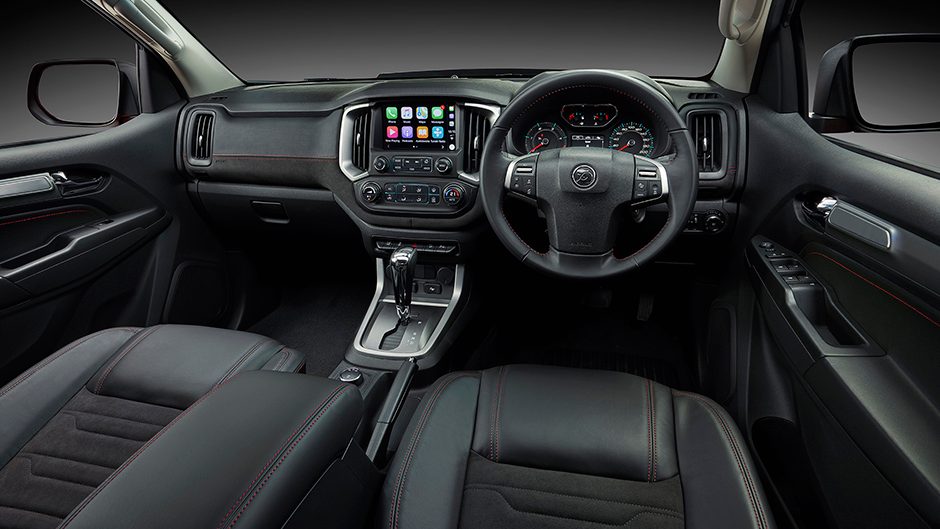
Working with the Adelaide-based company, HSV developed a better performing off-road suspension kit using inverted monotube dampers like those in the W1. These big-bore dampers have a larger oil capacity and with remote reservoir units they take more of a pounding without the oil overheating. Stoddart says they found that they also work better on road providing improved wheel control with no compromise to the ride.
The Plus also adds a four-piston AP Racing brake set-up on the front (drums remain on the rear) with 362mm rotors, up from 300mm. HSV has fitted a larger master cylinder to improve their effectiveness, reducing pedal travel and amping up the feel. The ESP has been retuned and is said to chime in a little earlier but less intrusively and there’s a specific setting for 4×4 high on gravel roads to help keep the truck flowing smoothly.
The new suspension hardware has been validated on the rough road durability track at Holden’s Lang Lang testing facility, most of it carried out to the point of failure, while the on-road dynamics were honed at the Winton test track. The ESP tuning and tyre testing were conducted in the US. Because they changed the grille, they even did additional cooling tests.
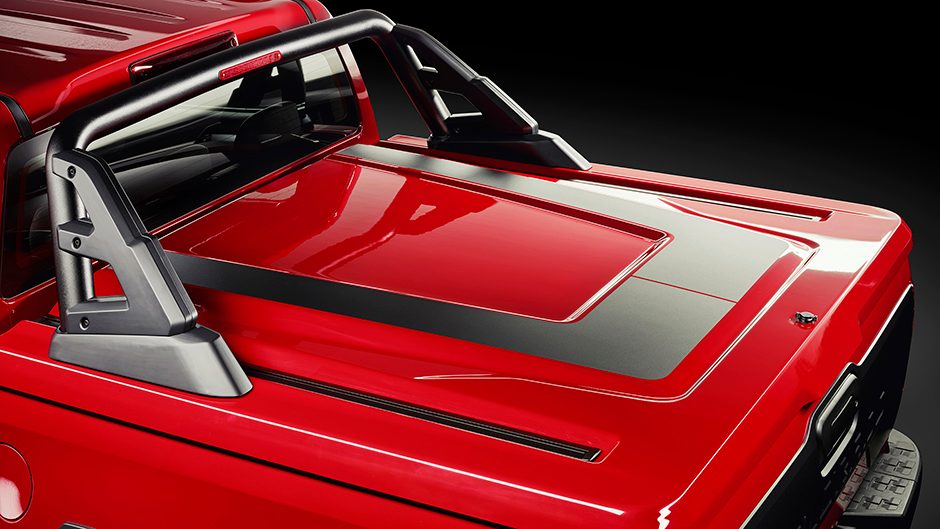
On the look, chief designer, Julian Quincey, wanted a ‘class-leading stature and stance’ which is provided chiefly by the wheels, tyres and the overflares.There’s a visual difference between the models; the SportsCat has a cleaner, pared-back look while the Plus is bolder, more aggressive with unique grilles, functional tow hooks and a bonnet bulge. Both have LED foglamps. The Plus also sports bigger, bolder flares. The tailgate wears a Colorado graphic, features a gas strut for a soft opening and a tray liner is standard. Both have a removable hard tonneau with a rail for clipping in carriers and racks, while the SportsCat features a sports bar and the Plus has a sailplane design.
Inside are new SV seats, reprofiled with a new base and larger bolsters, and they’re retrimmed in a combination of Windsor suede and perforated leather. There’s a new suede dash pad with red stitching which also features on the seats, wheel, and door trims, although nothing has been done to address the hard plastic on the door tops.
So HSV has been busy in its post-Commodore phase, and we did sample the new SportsCat at the Mount Cotton Driver Training Centre in Brisbane recently where we found the sum of the additions do make a more impressive Colorado. Driving around the road course we found this Colorado’s substantial mass to be more under control, the front end pointier and yet the ride quality remained intact. The big Coopers provide much improved overall grip and they build progressively into the inevitable understeer when you load them up through tight bends. Unlike some other big all terrain rubber we’ve tried, these provide a good feel for the limits rather than gripping then suddenly breaking loose. And they don’t rumble at speed either.
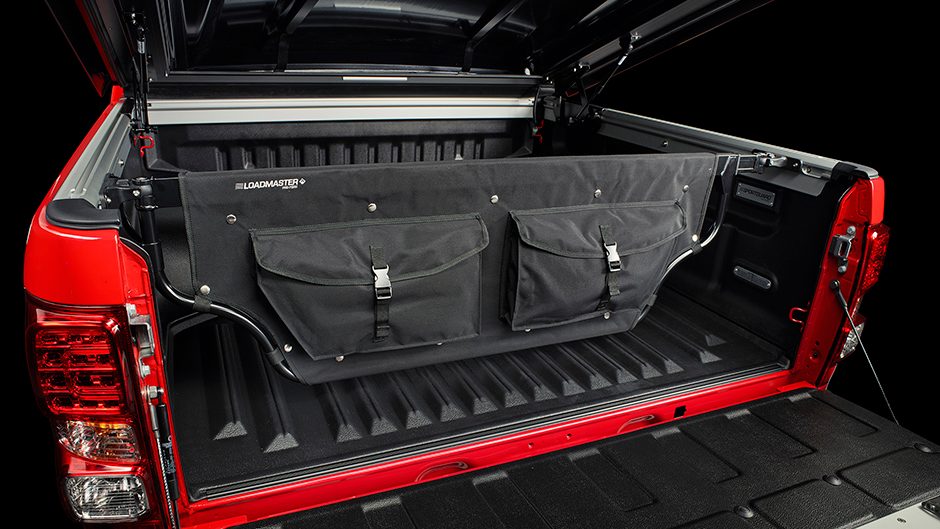
To highlight the ESP tune we took to a slick skid pan. With ESP armed, the truck could be driven around the course easily without the threat of breaking loose, the system working smoothly to keep you rolling along. With TC off, it will slide around a bit before the ESP tidies it up.
Turn everything off, and it goes sideways very quickly. While there was more spinning than controlled sliding, it proved the SportsCat can be a lark. Topping off the all-round capabilities, we took to the off-road trails of the facility where the SportsCat demonstrated its rugged side, climbing steep rutted tracks, the ample clearance and the big grippy tyres making easy work of the path.
The only downside we can see is the fact that the SportsCat is slower than the donor Z71 model. It’s heavier (HSV claim 2274kg for the Plus auto vs 2143kg for the Z71), and with its larger wheels the final drive is taller so acceleration is blunted. It doesn’t feel as punchy as the Colorado, which is the fastest of the four-cylinder utes on the market. HSV says its confident the all-round improvements will give SportsCat a competitive advantage in the market. And if people decide to turn to the aftermarket to help lift the outputs of the SportsCat, it certainly won’t be the first HSV that will have been sent straight from the showroom to the tuners.


